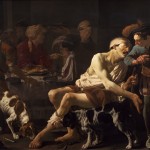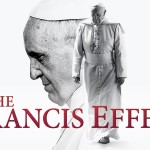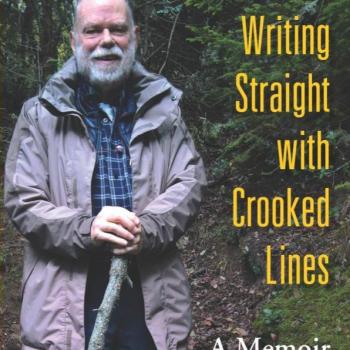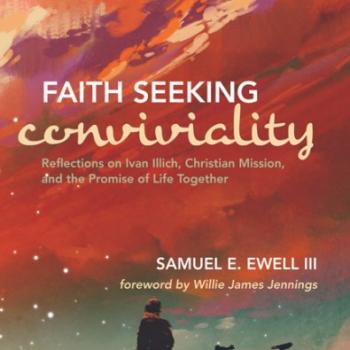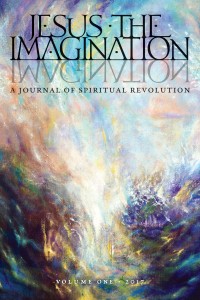 Art, says Michael Martin, has the potential to create a new Gospel every day. “Not a different one,” he adds, “but a new one, and this through the incarnational possible.” In the summer of 2016, Martin, a farmer and author of The Submerged Reality and The Incarnation of the Poetic Word, invited a number of friends to a rural Michigan weekend of reflection on the arts and culture. This was an arty, literate bunch but we shared a dissatisfaction at the state of the arts today, the continuing commodification of everything, and the vapidity of much Christian art, Catholic or otherwise.
Art, says Michael Martin, has the potential to create a new Gospel every day. “Not a different one,” he adds, “but a new one, and this through the incarnational possible.” In the summer of 2016, Martin, a farmer and author of The Submerged Reality and The Incarnation of the Poetic Word, invited a number of friends to a rural Michigan weekend of reflection on the arts and culture. This was an arty, literate bunch but we shared a dissatisfaction at the state of the arts today, the continuing commodification of everything, and the vapidity of much Christian art, Catholic or otherwise.
Somehow, amidst all the talk of William Blake, Wendell Berry, Jacob Boehme, Jane Lead, Nikolai Berdyaev, Hans Urs von Balthasar, Kathleen Raine, and Valentin Tomberg, we began to imagine a new journal of culture, one with the audacious goal of regenerating Christian art and culture.
Thus was born, with a nod to William Blake in our title, the journal Jesus the Imagination, edited by Martin and with contributions from a mix of folk, including several from last year’s gathering. Perhaps the four most famous “contributors” in this debut issue would be Simone Weil (a short prose piece translated by the editor), Owen Barfield (a never-before published interview with James R. Wetmore), the German poet Novalis (a translation of an excerpt from Hymns of the Night), and the English poet Henry Vaughan (“Regeneration”).
As a poet-editor might be expected to do, Martin has included poems from Rush Asch, Katie Hartsock, R. Bratten Weiss, Devan Meade DeCicco, Philippa Martyr, Tom Sturch, Isak Bond, Francis Valentine, Michael Kivinen, John Slater, Charles Upton, Emi Shigeno, and S.L. Davidson. They range from Rebecca Weiss’ wonderful Yeatsian lines (“Another summer now prepares to take her leave, all grains and grasses golden,/in her fine hat she waves to us, heading westward with the sun, a happy lady on a train”) to Charles Upton’s gently hallucinatory scenes (“Stopped for interrogation at the apocalypse border,/All past history rolling in behind me, piling up/For the final burning–“) to Katie Hartsock’s wry scenes (“This pint glass is the earth,/this cell phone is the sun, and the lip gloss moon comes here to make/a total lunar eclipse–“).
Of the essays, I was struck by Therese Schroeder-Sheker’s “Yurodivy,” a reflection on the notion of the voluntary suffering of the holy fool. The author, herself a harpist and Sony recording artist, is also the founder of the palliative medical field of music-thanatology and the Chalice of Repose Project, all of which work which informs her essay.
I also recommend Scot F. Martin’s “The Benthic and the Celestial”, a brilliant naturalist’s commentary, taking off from the Nicene Creed’s recent revision from God the Father “maker of heaven and earth of all things seen and unseen” to “things visible and invisible”, to clarify the difference between the natural and supernatural realms. In this short piece, the author describes the teeming, if unseen, insect and invertebrate life in the lakes and streams of Michigan, pointing his naturalist’s descriptions with striking spiritual insights.
There’s more but enough for now. Get yourself a copy here!

